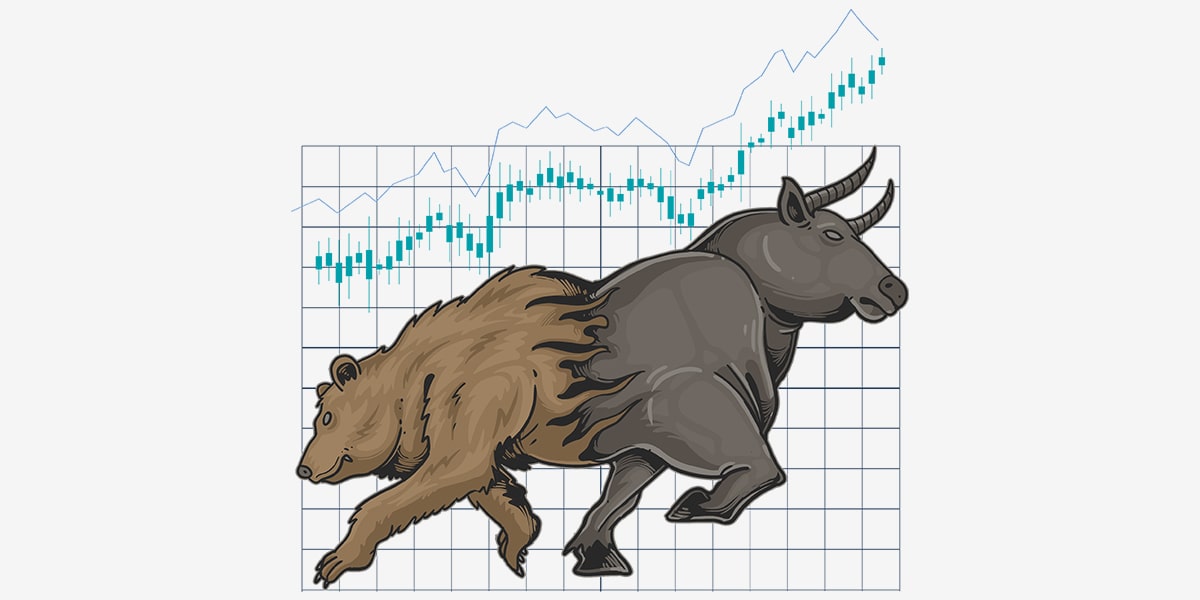17 January 2023
Bull and bear in market
The world of investing is full of choices, complexities and foreign jargon. Experienced traders sometimes use the terms "bulls" and "bears", but not in a literal sense at all. Although both phrases describe how the market works, they are quite different when it comes to their impact. They can easily influence the investment decisions you make and it is essential for you to understand this terminology.
A bull market occurs when the economy is booming and the stock market is rising, whereas a bear market operates during times of declining asset values. A well-adjusted strategy reacts constantly to market developments and generates significant profits, which is very important for every trader. Let's look at these two types of expressions and what they mean for your investment plan in more detail.

Where did the terms bull and bear market come from?
Most evidence suggests that the bear came into the market before the bull. The term originated from a proverb that warns against the temptation to "don't sell the bear's skin before you've caught it". There is less historical evidence for the spread of the term "bull", but it was probably chosen because of its symbolic opposition to the bear.
There is a belief that both phrases refer to the way animals attack their prey: bears swing their paws downwards and bulls push their horns upwards. These actions are metaphorically linked to the movement of the market: if it goes up, it is considered "bullish", and when it starts to go down, it is commonly referred to as "bearish".

Briefly about the bull market
A thriving economy and low unemployment are the main drivers of a bull market. Investors seek to buy or hold securities, thereby creating a buyer's market. In bull markets, which occur when investment prices rise over an extended period, traders' confidence soars. This is often a time when investors step in to take advantage of large profits. Therefore, they tend to be happier in a bull market than in a bear market.
A bull market comes into play when stock prices have risen by at least 20% overall since the last downturn. A bull market situation can last for decades and betting trying to predict its end is a misguided decision.
A good example is the US stock market, which had been in growth mode since 2008, after the financial crisis resumed, until the market collapsed in 2020 due to uncertainty related to the pandemic. So the bull market has been in the lead for 10 years.

Briefly about the bear market
While bull markets are based on optimism, bear markets arise when share prices fall by 20% or more over an extended period of time. "Bear" markets often appear in times of economic downturn and high unemployment. Instead of buying, investors want to sell, often fleeing cash or fixed-income securities.
The bad news about bear markets is that they can be unpredictable and it is unclear how long it will take for stock prices to recover. On the other hand, it is one of the most profitable times to shop. When the market is down, stock prices are much lower than usual. This means that now is your chance to invest in quality products while they are, in fact, on sale.
A bear market does not only occur in the whole market, it can also affect individual stocks, bonds, currencies or commodities. The first and most famous bear market was the economic shock caused by the Great Depression, which lasted for 10 years.
What is the point
Bear and bull markets are about equally common and give you the opportunity to make large profits. Simply put, share prices can fall as well as rise, and buying or investing correctly in a given period is an indispensable skill for a trader. While it is important to understand the direction of the markets, it is extremely difficult to predict when a transition from a bull market to a bear market will occur. As any experienced investor knows, markets are constantly changing and it is often not just because of the above indicators.


